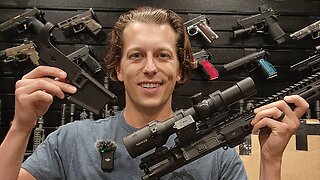Troy Reid inventor killed after creating an Electric car without A Battery
Devices that have truly improved the human condition - such as electricity, the telephone and the airplane - were created by people who passionately believe their inventions would make the world a better place to live. Troy Reed of Tulsa, Oklahoma is such a person.
Reed has invented and patented a motor that consumes no fuel and emits no fumes. It is powerful enough to turn a 7,000-watt generator, which is enough electricity to run an average home. Production of the Reed Magnetic Motor for use by the general public may begin by year's end.
Reed, 57, has also invented an automobile called "Surge" that employs his new technology. Unlike a battery-powered car, Reed's Surge does not have to be plugged in to be recharged. The car recharges itself as it rolls down the highway at speeds of up to 85 miles an hour. Reed and actor Dennis Weaver, a cousin and inventor in the project, plan to make the first highway test-run of the car this summer.
Reed said he has been contacted about coverage of the test run by, among others, 20/20, 60 Minutes, Larry King Live, Primetime Live and CNN. A representative of CNN, Reed said, has already seen the car and might broadcast daily updates during the journey.
The idea for this technology came to Reed in a number of dreams and visions over the past 35 years. He said he got the first in 1959 while employed as a machinist making 70 cents an hour. Thirty years later, in 1989, he put those dreams to the test, turning a hand crank that put the first Reed Magnetic Motor in motion. That prototype was seven feet tall, weighed more than 500 pounds, had four moving parts and powered a 500-watt generator. His latest motor takes two car batteries to start (they are re-charged by the generator), is 20 inches high, weighs less than 200 pounds, has one moving part and runs a 7000-watt generator.
If Reed's motor works as well as he says it does, it would be a rather amazing technological breakthrough. After all, it would mean a person could live anywhere one wanted with all the comforts and never have to pay an electric bill. One would also be able to drive to work, or anywhere else, without consuming fuel. And best of all, one could do these things without polluting the environment.
Although most people have never heard of the Reed Magnetic Motor, it is well known in the science world. Since 1989 Reed and his motor have been featured at numerous international scientific conferences - the most recent on in Denver in March. Reed also has been written up in scientific journals and is included in the latest edition of Monuments of Mars, a book of inventors written by former NASA science writer Richard Hoagland.
If Reed has his way, his motor soon will no longer be a scientific curiosity. Currently he is in the final stages of granting a license to produce the motor to an American company and a company in India. Reed would not give the names of the companies because he said he is still "negotiating."
"I've been approached by lots of companies from all over the world," Reed said. "I wanted the company that builds this motor to be doing it for the same reason I developed it - to help mother earth."
Reed did say that the companies granted licenses would start producing the motors for the consumer almost immediately. "The technology is already there, it is just a matter of putting all together the right way to make it work," Reed said.
The 1989 prototype uses a horizontal shaft with several magnets on it. Above the shaft are four vertical spring-loaded pistons with a magnet on the end closest to the shaft. Turning the hand crank spins the horizontal shaft and the magnetic spring-loaded pistons move up and down to trigger the motion of the shaft and the magnetic force field. Once the shaft is put into motion, it continues to spin until a brake is applied.
Instead of moveable pistons, the latest model of the motor uses and electronic system and stationary magnets to start and control the motion of the shaft. Consequently, the only moving part in the motor is the horizontal shaft. In the current model, the shaft turns in bearings, but Reed said the mass-produced model will not have the bearings. Instead, the shaft will be magnetically suspended inside the motor casing. Suspending the shaft means there will be nothing to wear out, or make noise, Reed said.
Reed is aware inventions such as his often end up being shelved away from the consumer by a large oil company. So Reed said he has proceeded with caution. "Just like the companies that are going to produce these motors, I made sure that my investors were motivated for the right reasons," Reed said. "If they are only in it for the money, then I turned them away. On the other hand, if they share my desire to see this technology in the marketplace to help save the environment, then we made a deal."
-
 1:57:30
1:57:30
Donald J. Trump
19 hours agoLIVE: President Donald Trump & VP Nominee, Senator JD Vance in Grand Rapids, Michigan
574K1.12K -
 LIVE
LIVE
Right Side Broadcasting Network
4 days agoLIVE REPLAY: President Trump and JD Vance Hold Major Rally in Grand Rapids, Michigan - 7/20/24
7,190 watching -
 2:42:08
2:42:08
vivafrei
19 hours agoThe Trump "Bullet Shot" Controversy! Live with Veteran, Combat Photographer Michael Yon - Viva Frei
171K402 -
 2:23:13
2:23:13
Jewels Jones Live ®
1 day agoTHE CHOICE 2024 | A Political Rendezvous - Ep. 84
130K34 -
 14:57
14:57
Standpoint with Gabe Groisman
3 days agoEp. 37. Failed Assassination was a Revealed Miracle
148K51 -
 13:43
13:43
Scammer Payback
4 days agoDeleting this Scammer Scumbags personal photos
158K62 -
 42:39
42:39
The Why Files
6 days agoWe Are the Aliens | Life's Interstellar Journey to Earth: Panspermia
190K107 -
 1:24:34
1:24:34
Michael Franzese
1 day agoTrump speech, assassination attempt updates, and foreign threats | MF LIVE | Ep. 12
167K150 -
 1:53:06
1:53:06
Tactical Advisor
20 hours agoBattleHawk Build Of The Month and Giveaway - Vault Room Live Stream
151K42 -
 19:55
19:55
My Self Reliance
1 day agoNow What?!
145K32